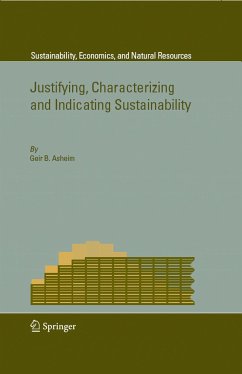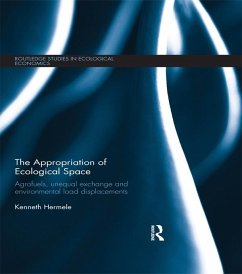
Justifying, Characterizing and Indicating Sustainability (eBook, PDF)
Versandkostenfrei!
Sofort per Download lieferbar
160,95 €
inkl. MwSt.
Weitere Ausgaben:

PAYBACK Punkte
80 °P sammeln!
During the last two decades, I have subjected the concept of sustainable development to economic analysis. To a great extent this work has been done in co-operation with my co-authors Wolfgang Buchholz, Bertil Tungodden, Martin Weitzman and Cees Withagen, and it has lead to a series of journal articles. This book presents the results of this research program. The original articles are reproduced. However, I have updated information about references and corrected a few mistakes (mostly typographical). STRUCTURE OF THE BOOK This book consists of 19 chapters. Chapter 1 is new, written as a guide ...
During the last two decades, I have subjected the concept of sustainable development to economic analysis. To a great extent this work has been done in co-operation with my co-authors Wolfgang Buchholz, Bertil Tungodden, Martin Weitzman and Cees Withagen, and it has lead to a series of journal articles. This book presents the results of this research program. The original articles are reproduced. However, I have updated information about references and corrected a few mistakes (mostly typographical). STRUCTURE OF THE BOOK This book consists of 19 chapters. Chapter 1 is new, written as a guide to the book and its content. It also gives an up-to-date survey of relevant literature and its relation to the later chapters. Chapters 2-19 are reproductions of published articles. The articles are organized into three parts. Part I, which comprises Chaps.2-7, is concerned with the normative question of how to justify sustainability. Part II, consisting of Chaps.8-13, considers how sustainable development can be characterized. Finally, in Part III, Chaps.14-19 are devoted to the problem of indicating sustainability. Within each part, the initial chapter - i.e., Chap.2 for Part I, Chap.8 for Part II and Chap.14 for Part III - is an overview article that functions as a survey for the later chapters in the corresponding part.
Dieser Download kann aus rechtlichen Gründen nur mit Rechnungsadresse in A, B, BG, CY, CZ, D, DK, EW, E, FIN, F, GR, HR, H, IRL, I, LT, L, LR, M, NL, PL, P, R, S, SLO, SK ausgeliefert werden.













